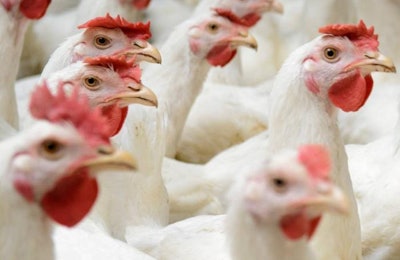
The various pandemics impacting the global poultry industry are affecting different regions in different ways, yet there are difficulties, common to most markets, that should dissipate as the year draws to a close.
Speaking at a EuroTier event looking at the impact of pandemics on the global poultry industry, Rabobank’s Nan-Dirk Mulder noted that the last 12 months had been disruptive with numerous challenges but there remain opportunities ahead.
He noted that, worldwide, prices for poultry meat and eggs have been low, and that poultry, in some respects, has suffered more than some other animal. Where pork is curtained, outbreaks of African swine fever (ASF) in Europe have triggered price support. No such support has been available for poultry. Additionally, poultry’s high exposure to foodservice has meant that, where COVID-19 restrictions have resulted in restaurant closures, poultry has been particularly affected.
While retail demand for chicken meat has risen, this has not been enough to compensate for lost foodservice channels.
2021 will remain challenging, however, vaccination should result in a gradual reopening of restaurants in the second half of the year.
Any recovery, however, will not be helped by rising feed prices. Mulder noted that grains and oilseed prices had risen by 50-60% and that demand for quality feed ingredients was being driven by demand from China and South East Asia.
The European Union poultry industry had failed to be disciplined in reducing supply, he noted, and while a similar situation existed in the U.S, producers there has been more disciplined and were now seeing improving margins.
Other changes brought about by the various pandemics, he continued, have been a shift to sourcing more locally and a boom in online purchases.
While the year ahead may still be tough, longer-term the outlook remains positive.
Varying impacts
Looking to China, Lei Jin of Depthfield, noted that China had been the only major economy to grow last year. He added that the outbreaks of ASF have had a major impact on poultry production and that meat imports by the country had risen dramatically. While imports will remain high this year, they are expected to be lower than in 2020.
Looking to the Russian market, Sergey Lakhtyukhov of the Russian Poultry Union noted that various factors have been impacting the market, but that Russian poultry producers benefitted from the delay in COVID-19 reaching the country. This, he said, gave the sector time to prepare.
The country has seen exports rise significantly over recent years, particularly to China, and where COVID-19 is having an impact is around increased bureaucracy and testing for the virus required by some importing countries.


















